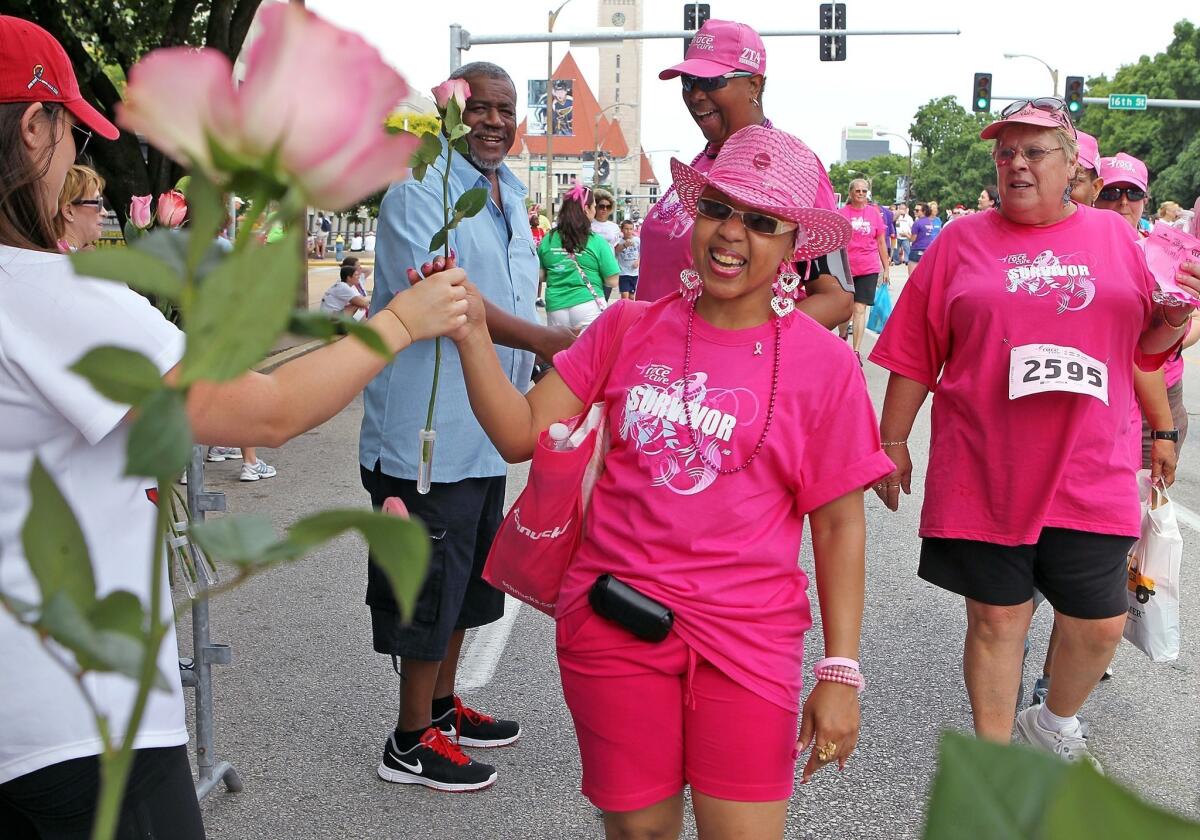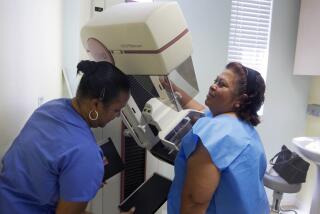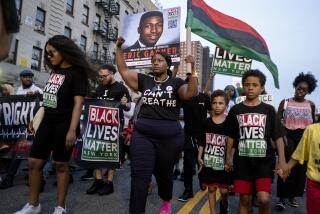Why breast cancer is more likely to kill black women

- Share via
A diagnosis of breast cancer is more likely to lead to early death for black women than for white women, a disparity that’s mainly the result of having more health problems before cancer develops, new research shows.
Of the black women on Medicare who were told they had breast cancer, 55.9% were still alive five years later. That compared with 68.8% of white women who were the same age, lived in the same area and were diagnosed in the same year, according to a study published in Wednesday’s edition of the Journal of the American Medical Assn.
But the more that white women had in common with black women, the smaller the discrepancy became. When the researchers compared the black breast cancer patients with white patients who had similar demographic characteristics as well as similar tumors, the survival gap of 12.9 percentage points shrank to 4.4 points. And when the researchers focused on white patients who had not only similar demographics and tumors but who also got similar breast cancer treatments, the gap narrowed further, to 3.6 percentage points.
To the research team, this suggested that black women with breast cancer fared worse than whites because they were sicker to start with. For example, they noted, 26% of the black patients already had diabetes when they were told they had breast cancer; among the group of white women matched for age, year of cancer diagnosis and area of residence, 15.3% had diabetes.
“Most of the difference is explained by poorer health of black patients at diagnosis, with more advanced disease, worse biological features of the disease, and more comorbid conditions,” they wrote.
The findings are based on Medicare data collected by the National Cancer Institute. From 1991 to 2005, 7,375 black and 99,898 white women, or 107,273 total, who were at least 65 years old were found to have breast cancer. The gap in survival was consistent over the entire period of the study.
Though the researchers did find that the treatment black patients got wasn’t as good as for whites — blacks were less likely to get certain combinations of chemotherapy drugs and more likely to get breast-conserving surgery without additional therapy — they didn’t think those differences had much effect.
“By the time blacks [visit a doctor], they’re so sick that treatment isn’t changing the outcomes,” said Dr. Jeffrey H. Silber, director for the Center for Outcomes Research at Children’s Hospital in Philadelphia and leader of the study. “The outcome is already fated to be poor when patients come in with such advanced disease.”
The researchers found that black women tended to be diagnosed with bigger tumors and more advanced cancers than white women. They also discovered that after being diagnosed with breast cancer, black patients waited longer than white patients to begin treatment — 29.2 days on average, compared with 22.5 days for demographically similar white patients.
The researchers wrote that if black women began treatment earlier, the survival gap between blacks and whites would actually grow, because then the effects of getting inferior treatment would matter more.
Because the study was based on Medicare data, it did not consider younger women, who are more likely to have aggressive cases of breast cancer. Silber said the survival gap between blacks and whites was probably even larger for patients under 65.
“They probably will have worse insurance because they don’t have Medicare yet,” he said. In addition, “there are biological differences in tumors between blacks and whites in the younger ages” that favor white women, he said.
Kimlin Tan Ashing, a researcher at the City of Hope Cancer Center in Duarte who studies racial inequalities in cancer outcomes, said the study underscored the far-reaching effects of racial disparities in healthcare.
“The burden diabetes brings to the cancer experience is horrendous,” said Tan Ashing, who was not involved in the study. She added that the poorer health experienced by black women before breast cancer developed could be traced in part to basic factors such as worse nutrition and less exercise.
But Dr. Jeanne Mandelblatt, a professor of oncology at Georgetown University who wrote an editorial that accompanied the study, said she didn’t find all of the report’s conclusions convincing. Silber and his colleagues might have underestimated the importance of certain treatments that the study didn’t take into account, she said.
Silber said he agreed that better access to treatment was important, but said it was not enough to make up for the fact that black women were more likely to be diagnosed after the disease was more advanced.
“It’s a primary care problem,” he said.






